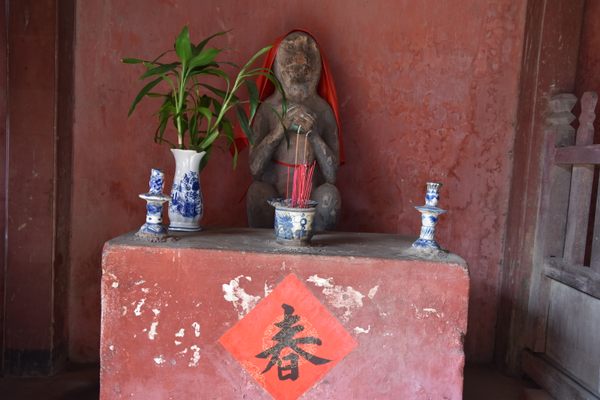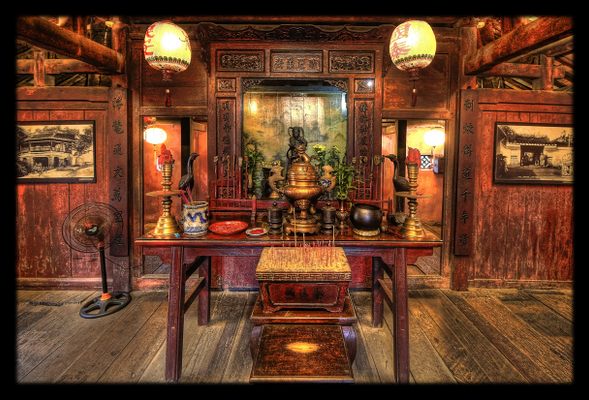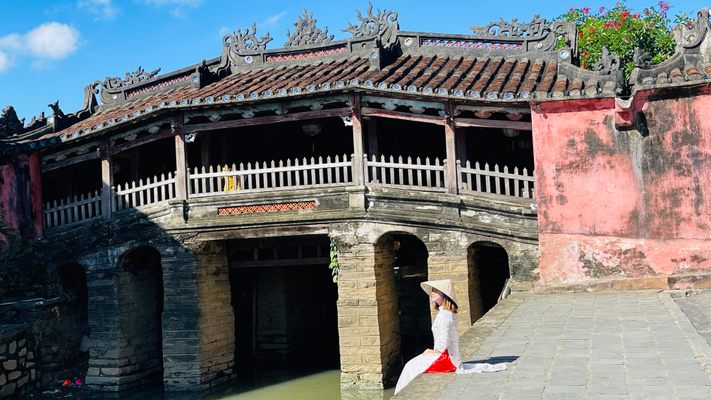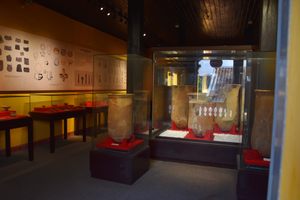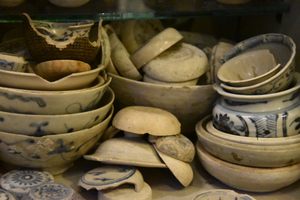About
Hoi An is an old port city in central Vietnam that flourished from the 16th to 19th-century, attracting traders from Japan, China, and Europe. Its historic district, designated as a UNESCO World Heritage Site as the Hoi An Ancient Town, was once divided into the Chinese and Japanese quarters, connected by a beautiful arched bridge.
Chùa Cầu, commonly referred to as the Japanese Covered Bridge, is one of the most iconic sights in Hoi An's old town, having survived the Vietnam War and noted for its ornate design. It was constructed by Japanese traders in 1593, and in 1653, a small temple was erected at the center of the bridge, dedicated to the god of weather. According to local legend, the Japanese built the temple to subdue the Namazu, a mythical catfish monster that causes earthquakes.
There are statues of a monkey and a dog on the ends of the bridge, inspired by the Chinese zodiac years on which its construction started and ended. The bridge was named Lai Vien Kieu ("bridge for passers-by from afar") by Nguyen Phúc Chu in 1719 after a quote from the Analects of Confucius.
In 1639, the Tokugawa shogunate of Japan adopted a strictly isolationist foreign policy resulting in the end of its trade with Vietnam. The Japanese quarter was all but abandoned, and the Dutch East India Company withdrew from Hoi An that same year. Eventually, its status as an important trade port was also passed on to Da Nang. Thanks to this, the city evaded damage during the Vietnam War, preserving its historic sites.
That said, the current Japanese Covered Bridge is not the original that was built during the 16th-century. It has undergone several renovations and restorations, in fact, and its architectural style has become more and more Chinese (and Vietnamese, of course) than Japanese over time. Most recently, it was restored in 1986.
The bridge was depicted on the 20,000 dong banknote, which was first issued in 2006. Currently, it's suffering from erosion caused by the sewer below and is in danger of either tilting or sinking.
Update: the bridge is currently undergoing renovation work. It started in January 2023 and is set to be completed in December.
Update as of March 2024: Renovation work is still ongoing.
Related Tags
Know Before You Go
To explore the old town of Hoi An, visitors are expected to pay 120,000 VND (5 USD) to purchase a set of five tickets. While it's free of charge to cross the Japanese Covered Bridge, it costs one ticket to visit its temple.
Flavors of Vietnam: Fish Sauce, Pho & Royal Tea
Eating your way from North to South in Vietnam.
Book NowCommunity Contributors
Added By
Published
November 10, 2020










